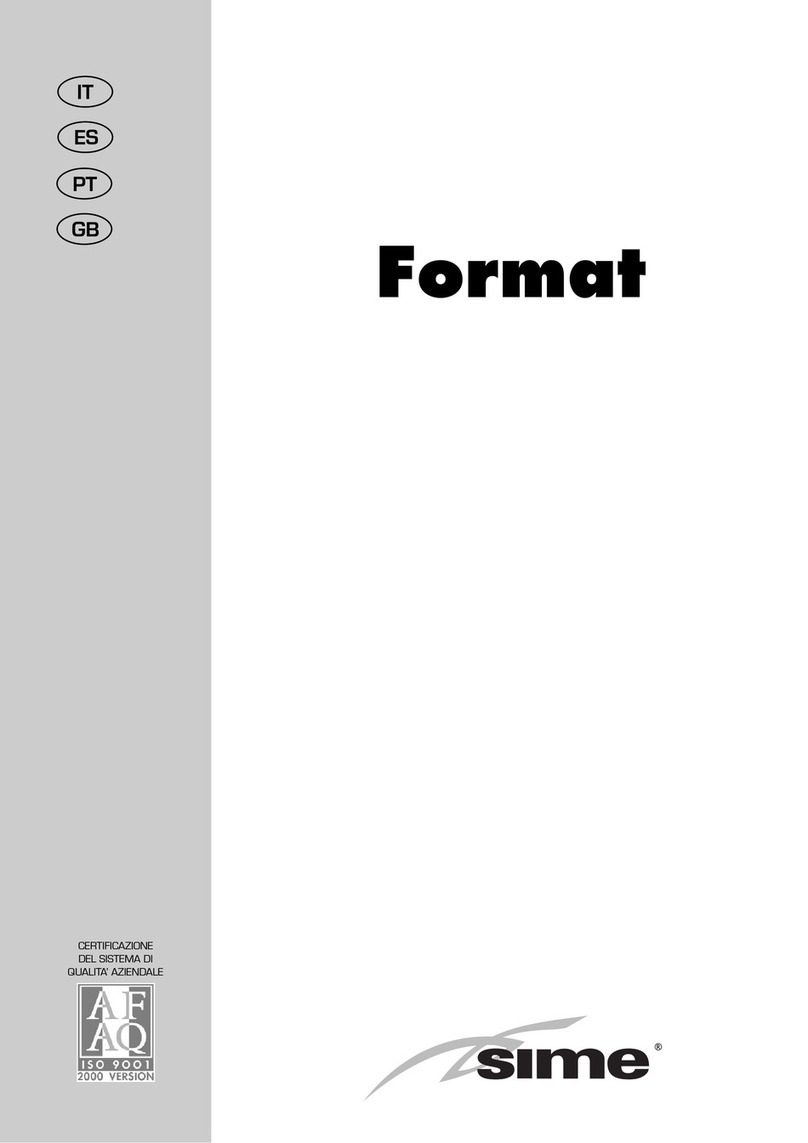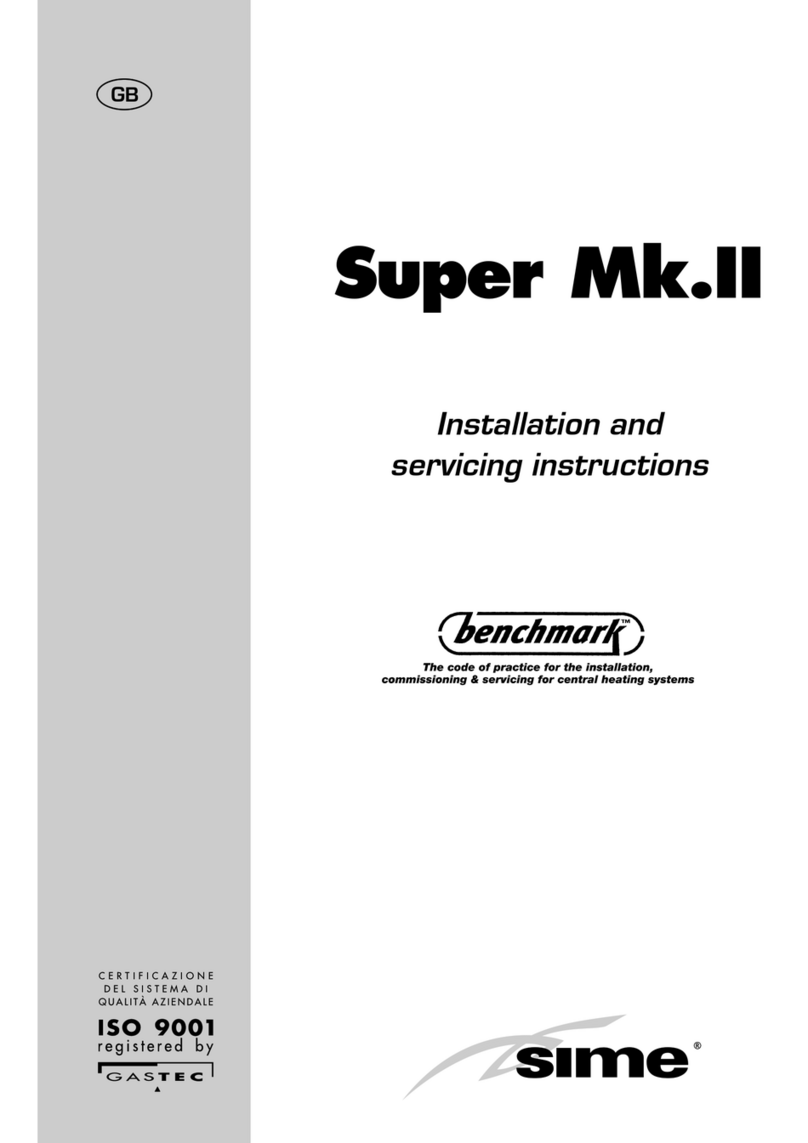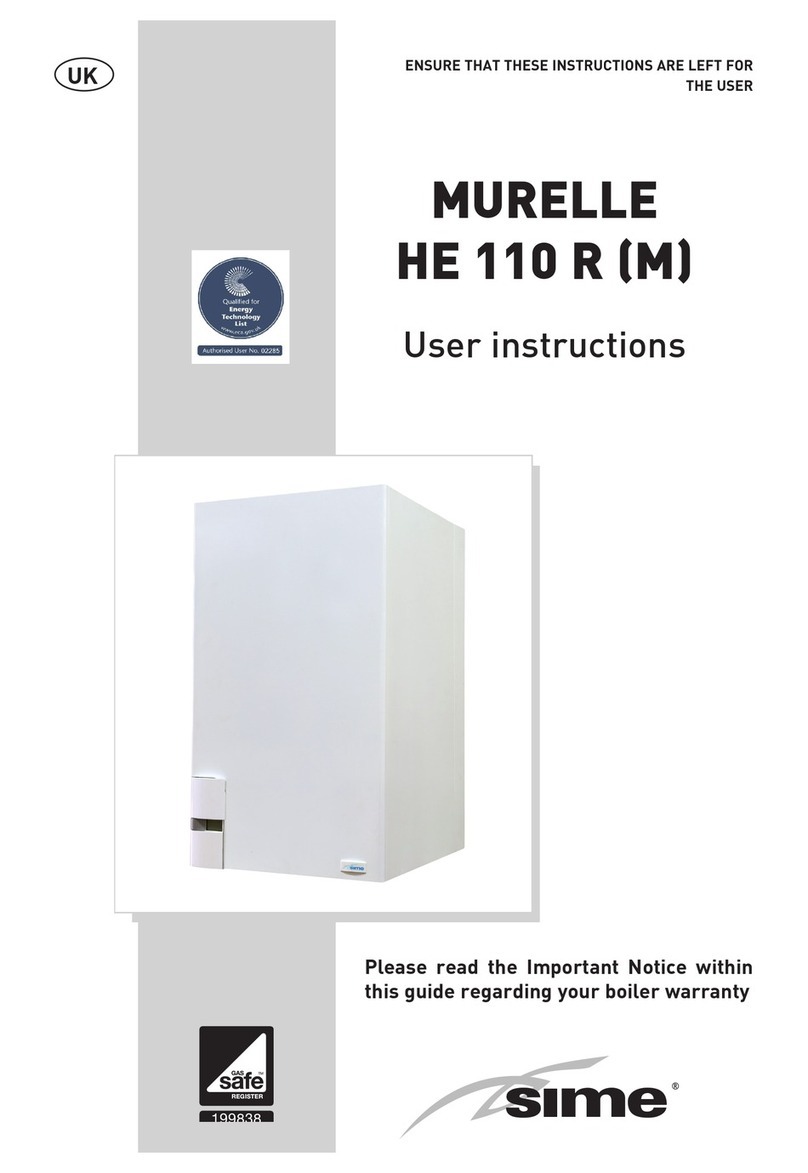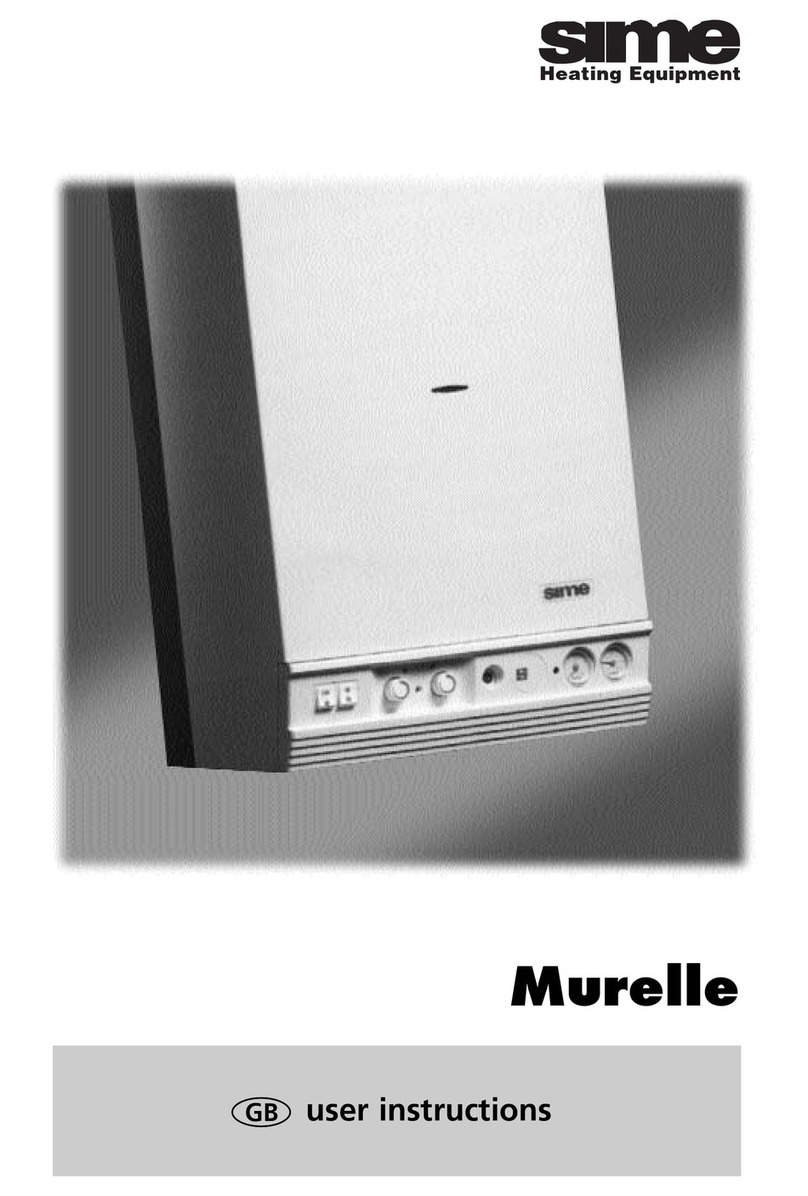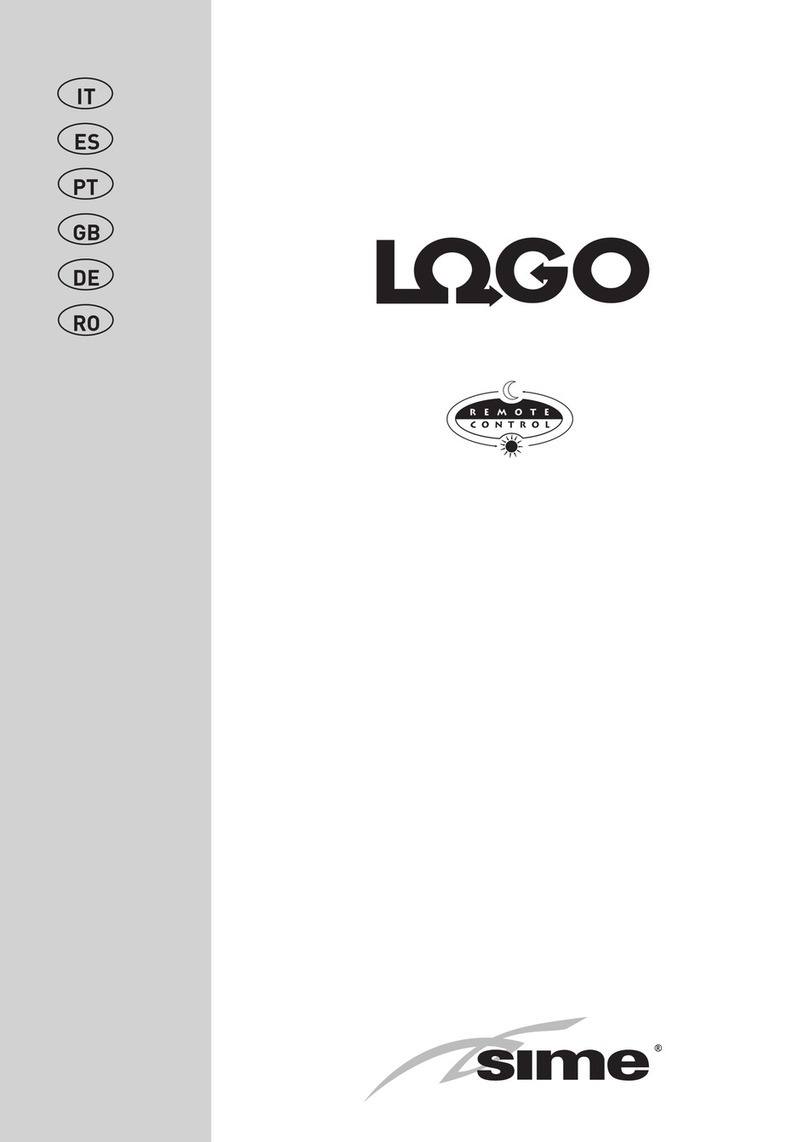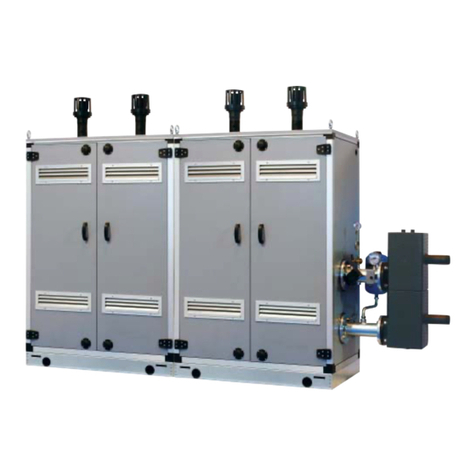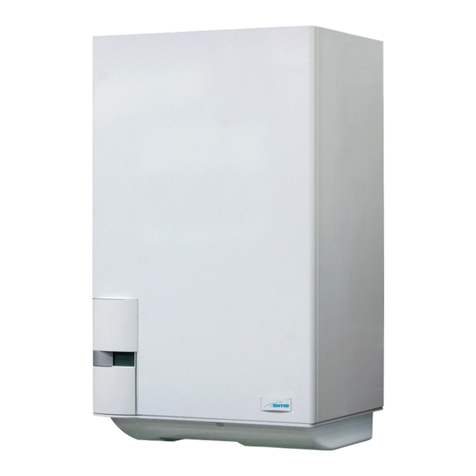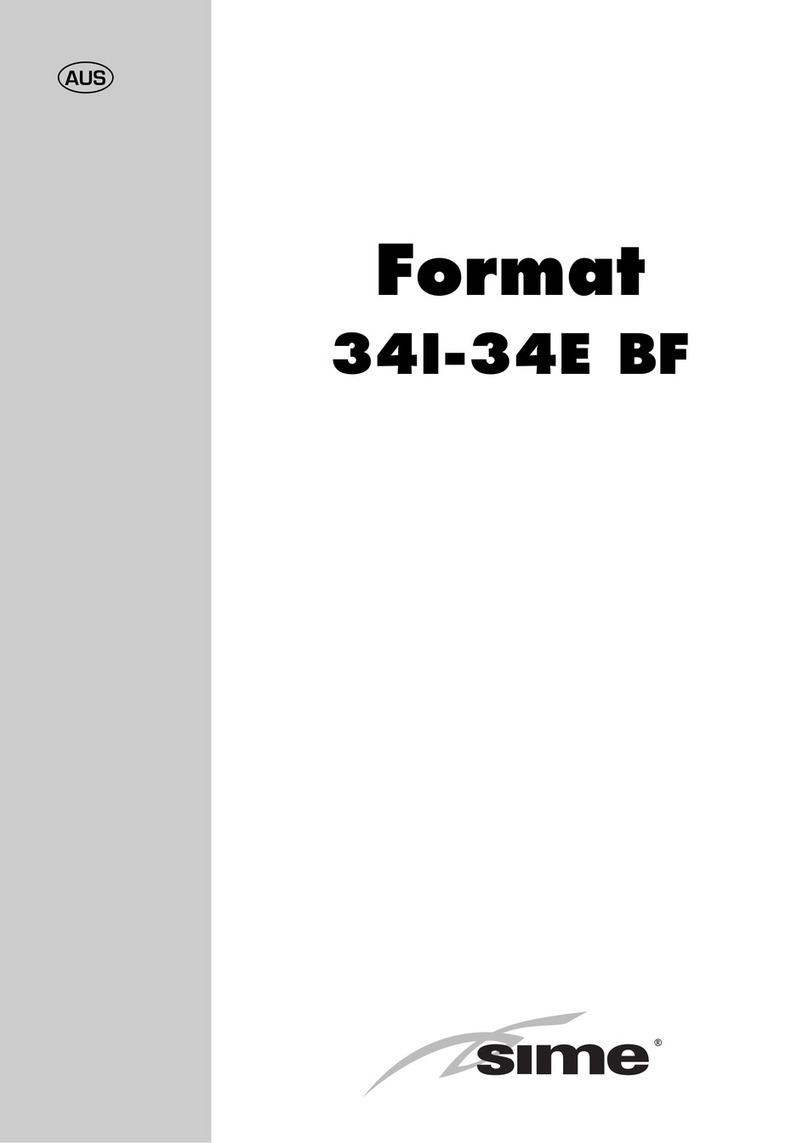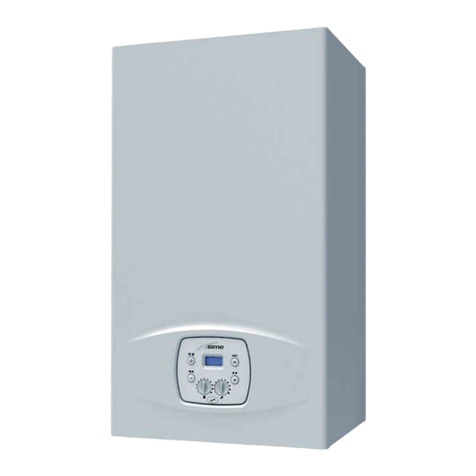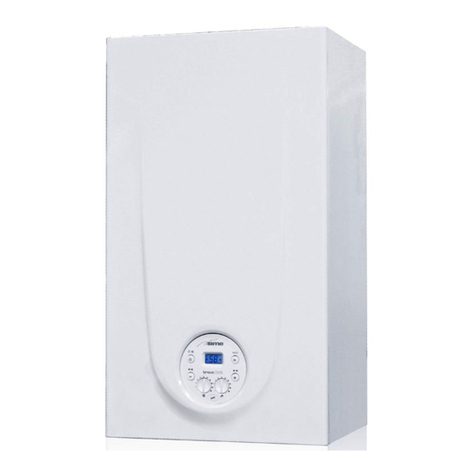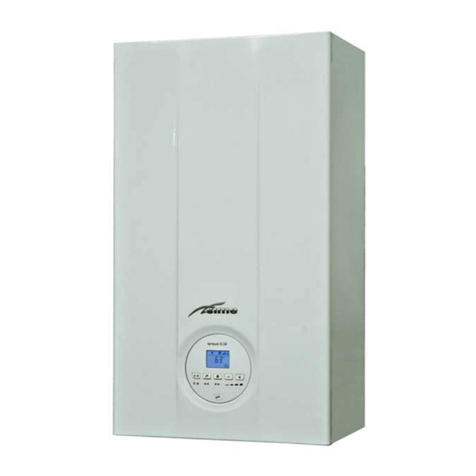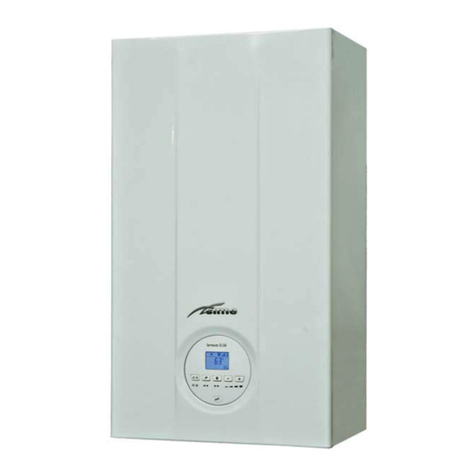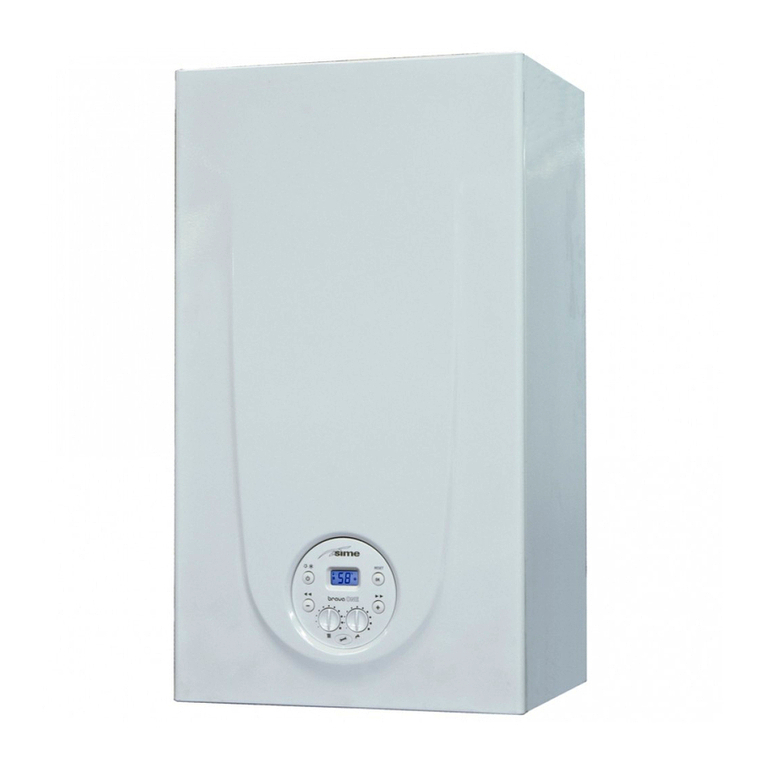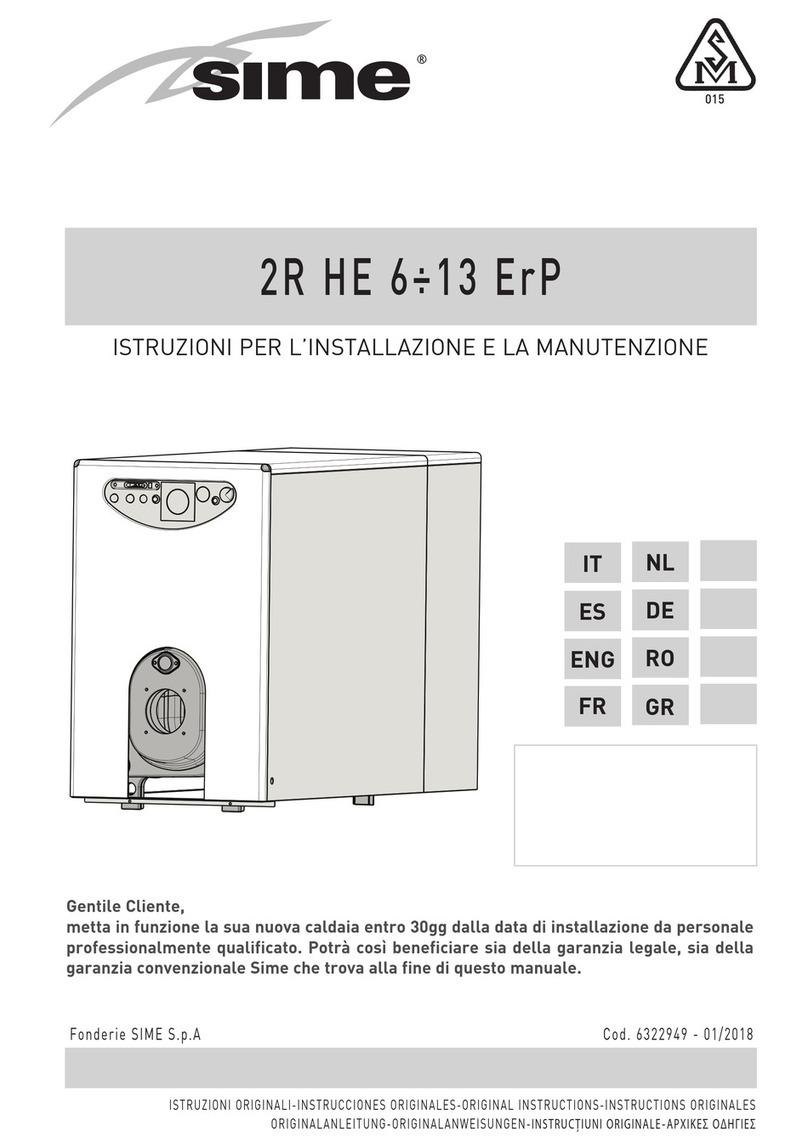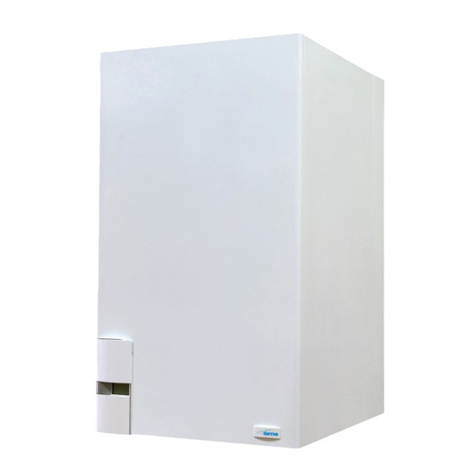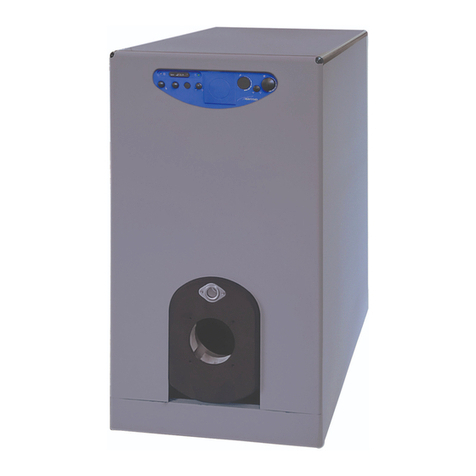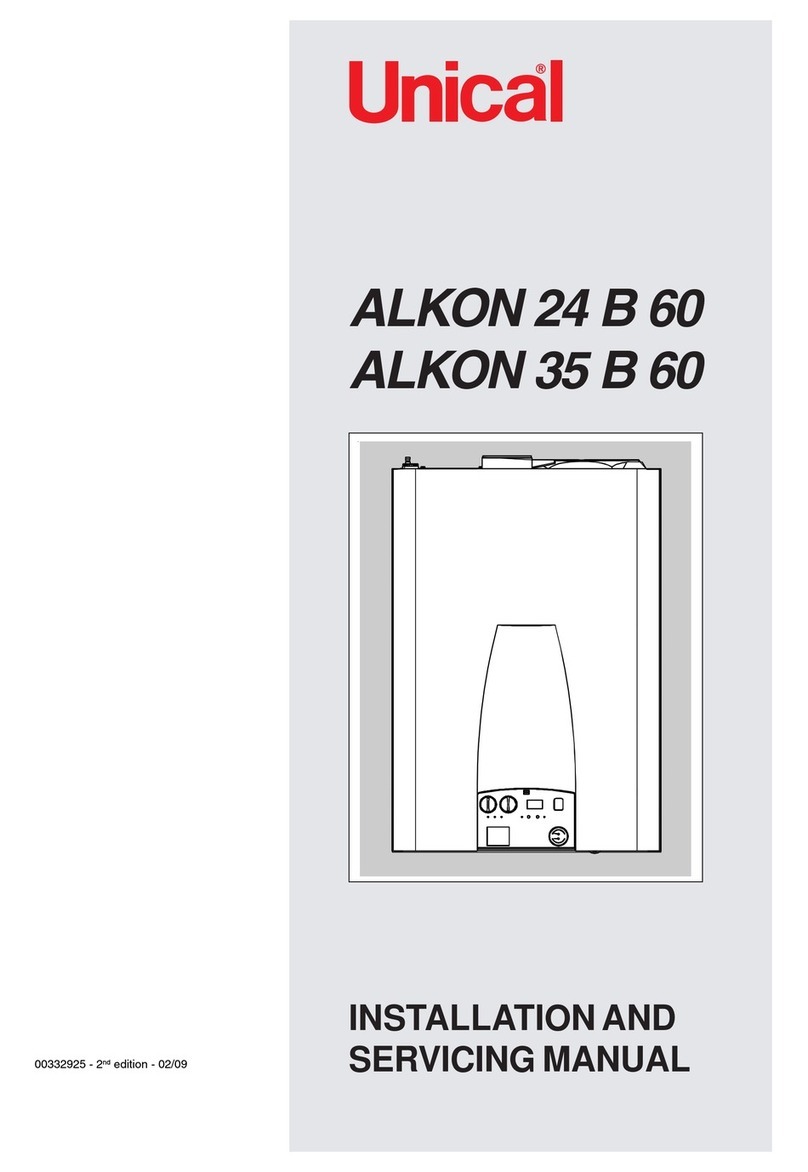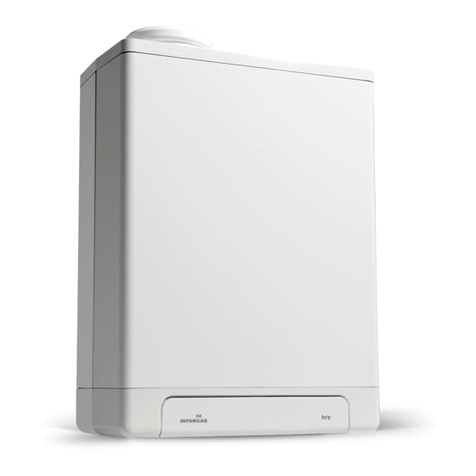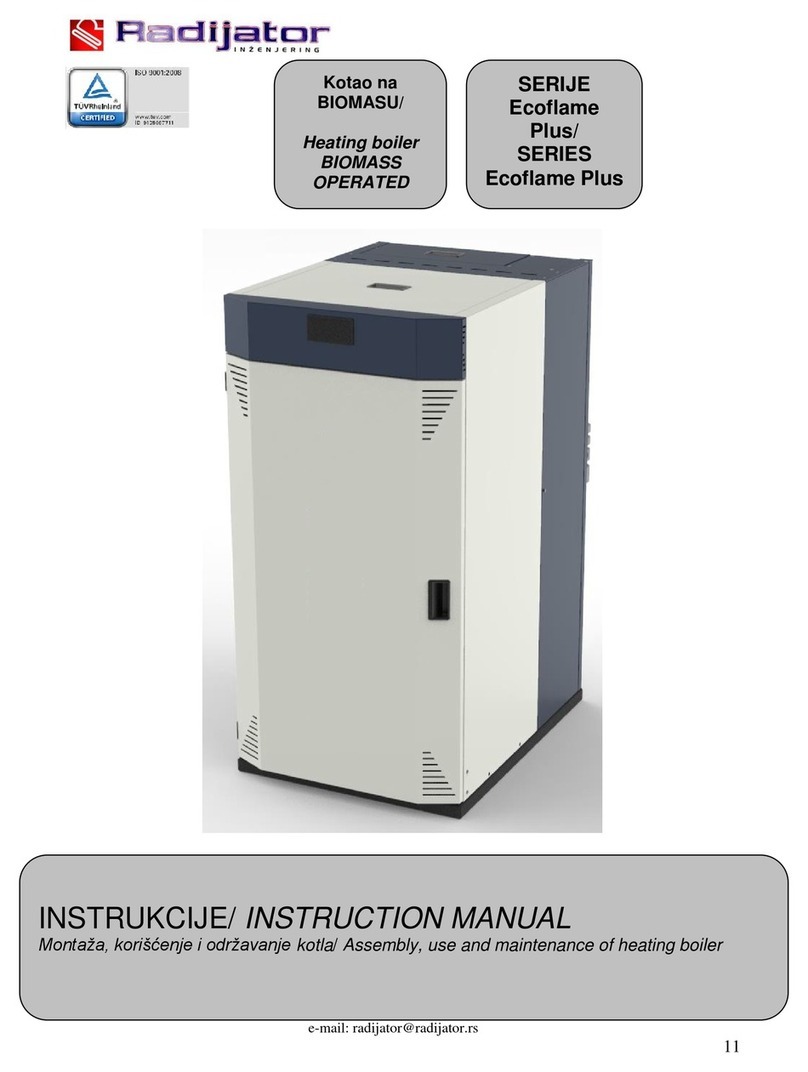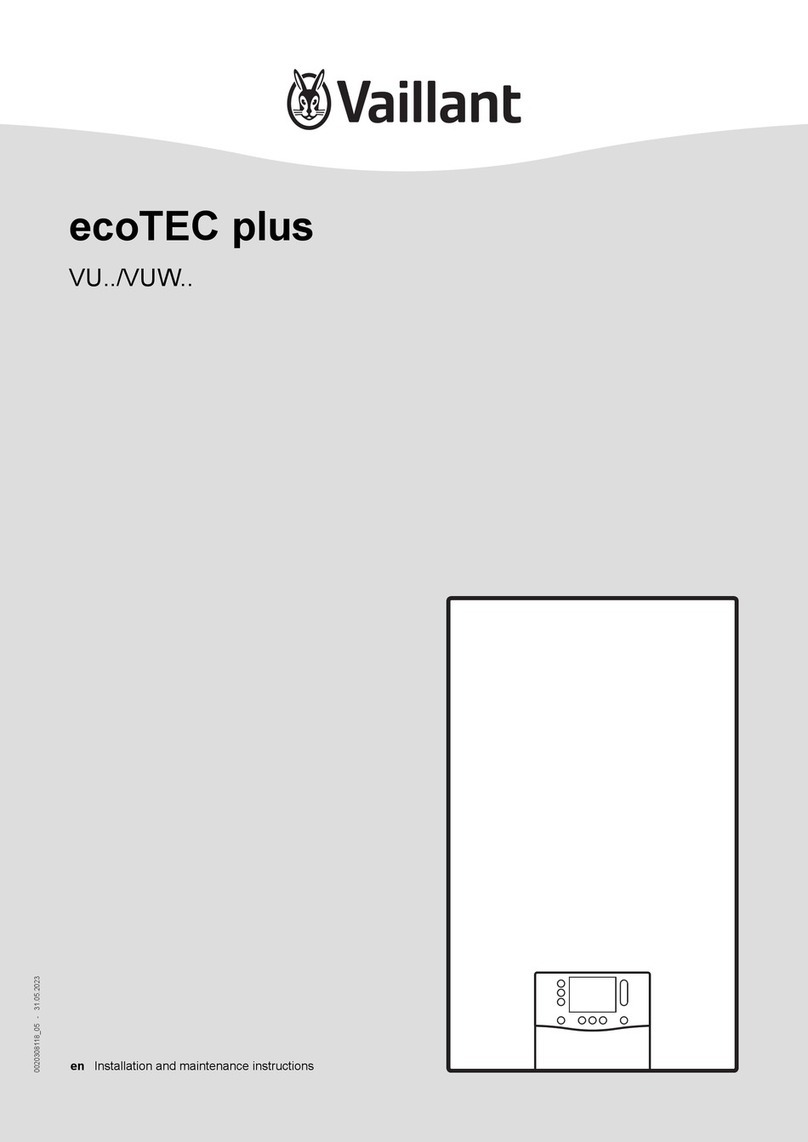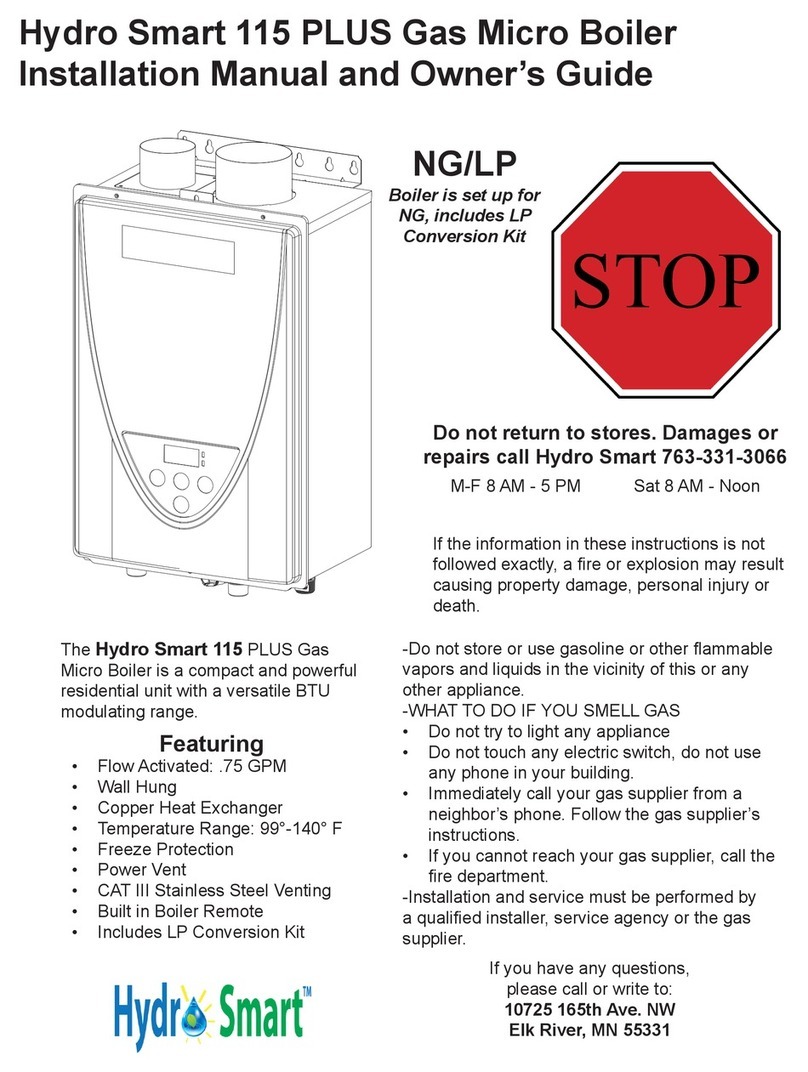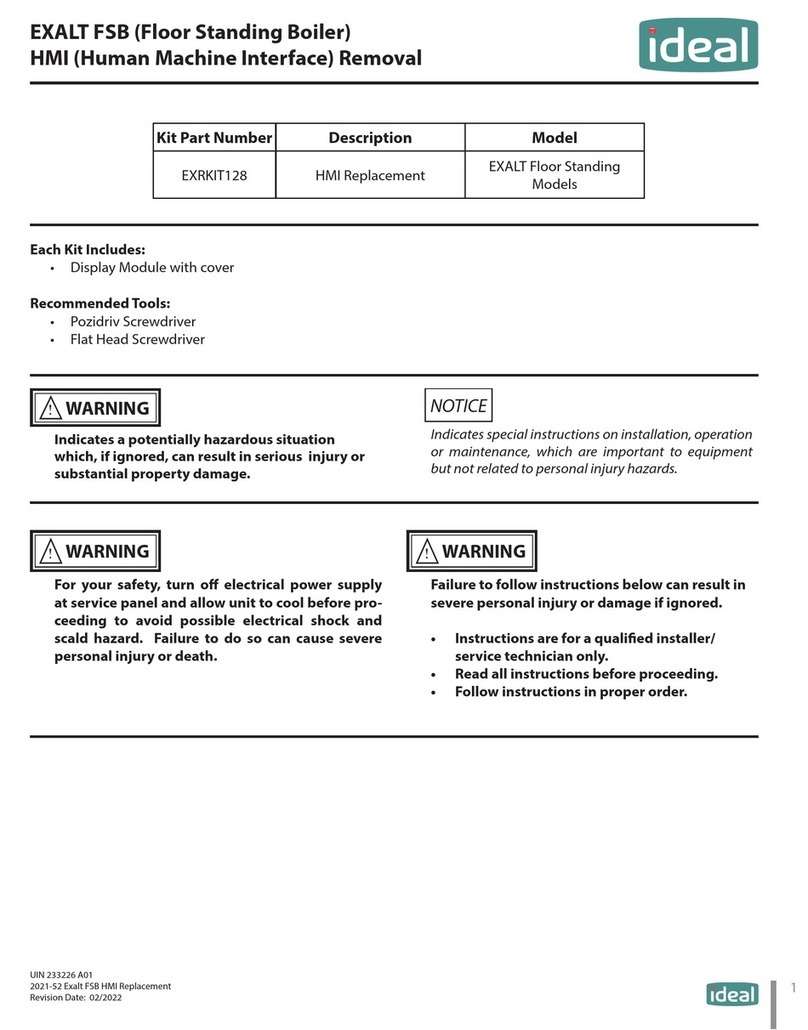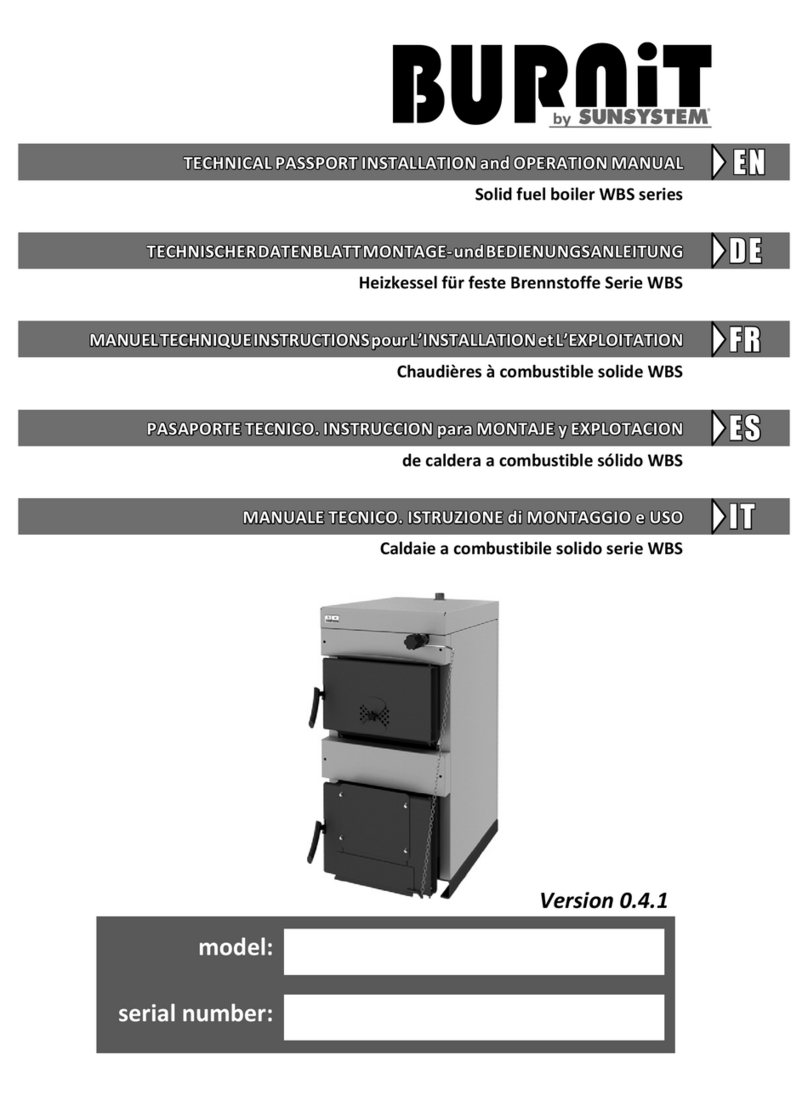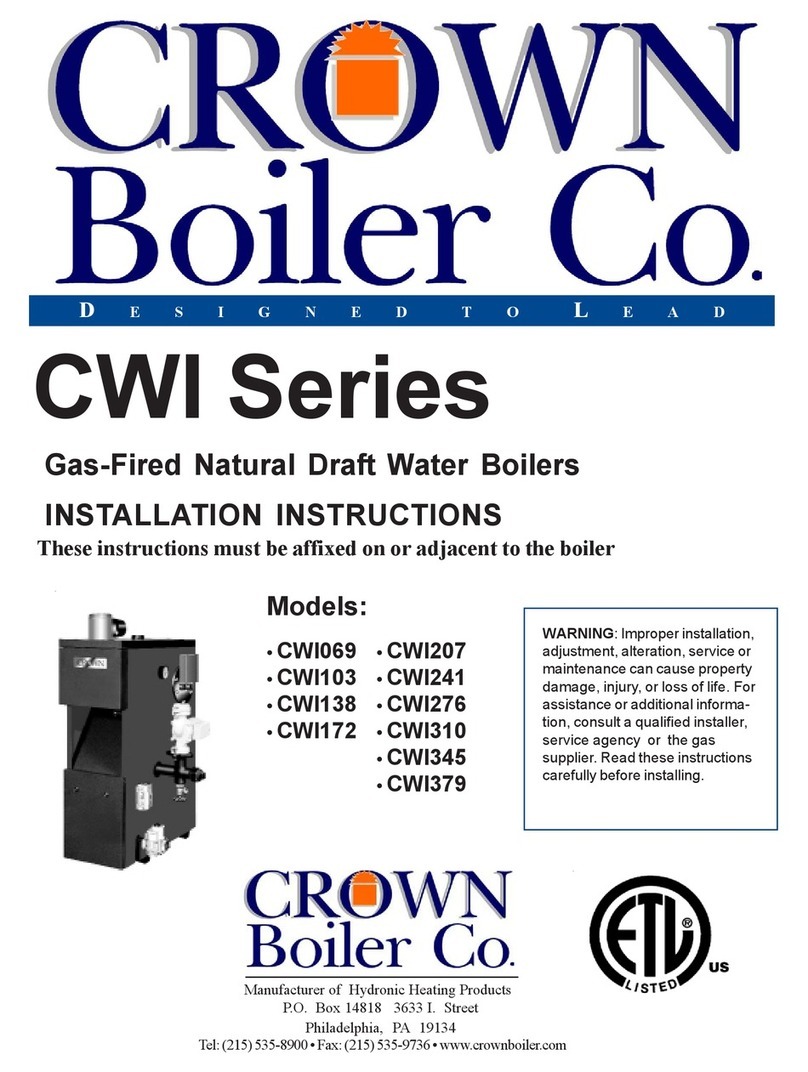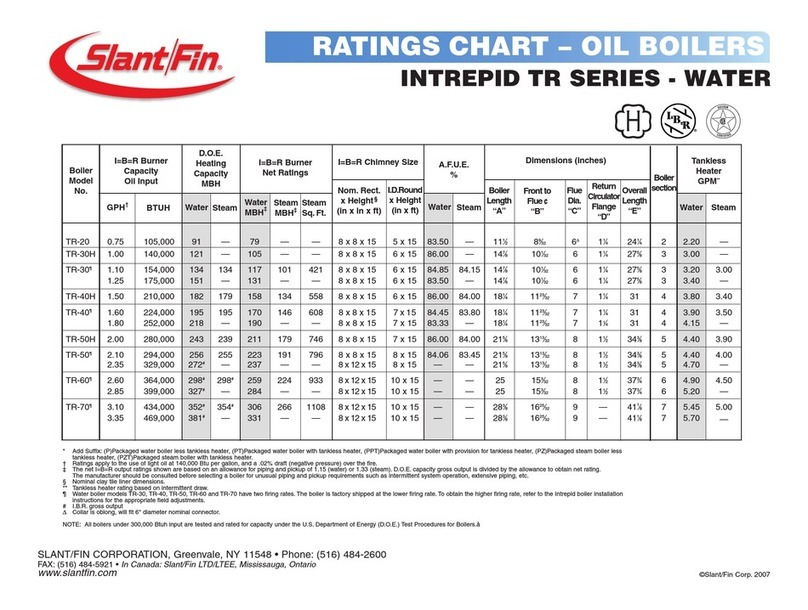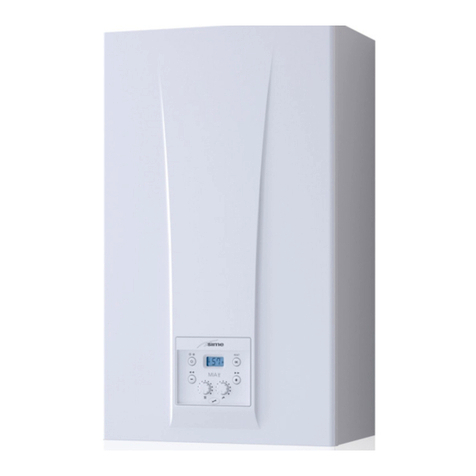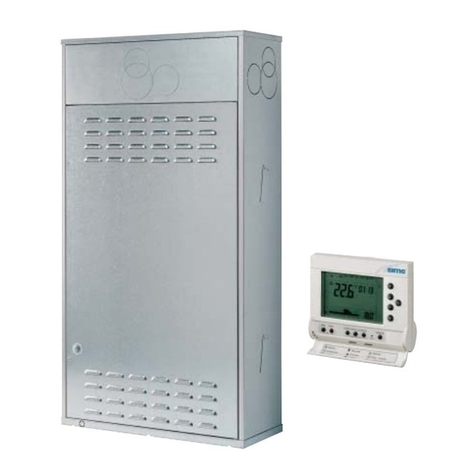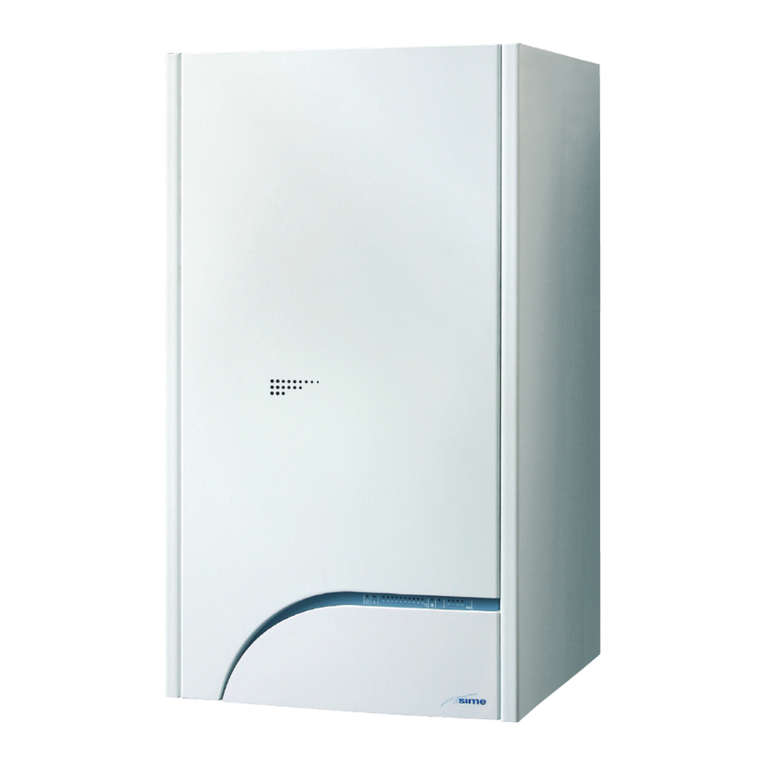10
The boiler must be installed in a fixed loca-
tion and only by specialized and qualified per-
son in compliance with all instructions con-
tained in this manual. The boiler should be
installed in accordance with the Gas Safety
Regulations.
It is important that the condensate trap
be filled prior to operating the boiler. The
trap can be filled by pouring water care-
fully into the inner flue connection prior to
installation of the flue. Care should be
taken not to allow any water to enter the
outer flue.
2.1 VENTILATION REQUIREMENTS
Detailled recommendations for air supply
are given in BS5440:2. The following notes
are for general guidance:
– It is not necessary to have a purpose pro-
vided air vent in the room or compart-
ment in which the appliance is installed.
2.2 FIXING THE WALL
MOUNTING BRACKET
– Mark the position of the two wall mount-
ing bracket fixing holes and the flue/air
duct hole on the appropriate wall(s).
– Drill the top two fixing holes using a 10
mm masonry drill and fit the plastic
plugs provided.
– Cut the hole in the wall for the flue/air
duct. The diameter should not be less
than 100 mm (4 in) and must be hori-
zontal. If the hole is not accessible from
the outside of the building, its minimum
diameter should be sufficient to allow
the insertion of the wall liner (130 mm -
5 1/4in diameter) which will be sealed
with mortar.
– Accurately measure the wall thickness,
and note this dimension for later use.
– Secure the wall mounting bracket in
position using the screws provided.
Ensure that it is the correct way up, as
indicated in fig. 4.
2.3 CONNECTING UP SYSTEM
Before proceeding to connect up the boiler,
you are recommended to flush out the system
in order to eliminate any foreign bodies that
might be detrimental to the operating efficien-
cy of the appliance. When making the
hydraulic connections, make sure that the
clearances indicated in fig. 1 are respected.
To facilitate the hydraulic connections the boil-
er is equipped with a valve pack code
5184817 complete with instructions sheet.
A safety valve set at 3 bar is fitted to the
appliance, the discharge pipe provided
should be extended to terminate safely
away from the appliance and where a dis-
charge would not cause damage to per-
sons or property but would be detected.
The pipe should be a minimum of 15 mm Ø
and should be able to withstand boiling
water, any should avoid sharp corners or
upward pipe runs where water may be
retained.
Gas Connection
: The gas connection must
be made using seamless steel or copper
pipe, galvanized and with threaded joints
provided with gaskets, excluding three-piece
connections, except for initial and end con-
nections. Where the piping has to pass
through walls, a suitable insulating sleeve
must be provided. When sizing gas piping,
from the meter to the boiler, take into
account both the volume flow rates (con-
sumption) in m3/h and the relative density
of the gas in question. The sections of the
piping making up the system must be such
as to guarantee a supply of gas sufficient to
cover the maximum demand, limiting pres-
sure loss between the gas meter and any
apparatus being used to not greater than
1.0 mbar for family II gases (natural gas). An
adhesive data badge is sited inside the front
panel; it contains all the technical data iden-
tifying the boiler and the type of gas for
which the boiler is arranged.
2.3.1 Connection of condensation
water trap (fig. 4/a)
To ensure safe disposal of the condensate
produced by the flue gases, reference should
be made to BS6798:2000. The boiler incor-
porates a condensate trap which has a seal of
75mm, therefore no additional trap is
required. The condensate should ideally be dis-
charged internally into an internal waste
pipe(washing machine/sink waste) or a soil
pipe to avoid the risk of freezing. External pipe
runs should be avoided, but if it is necessary,
the pipework should be at least 32mm and
protected from the risc of freezing with a
waterproof insulation and the length kept to a
minimum and not exceeding 3 m. termination
should be into an external gully or purpose
made soakaway.
NOTE: All pipework must have a continuous
fall from the boiler and must be resistant to
corrosion by condensate, copper or steel is
NOT suitable. It should be noted that the
connection of a condensate pipe to a drain
may be subject to local building control
requirements.
2 INSTALLATION
Fig. 4/a




















